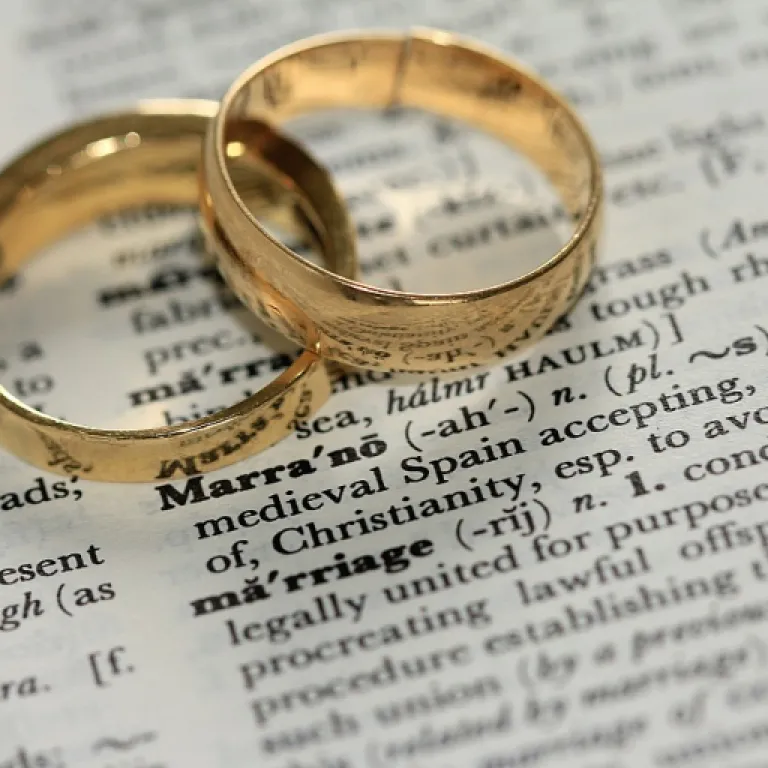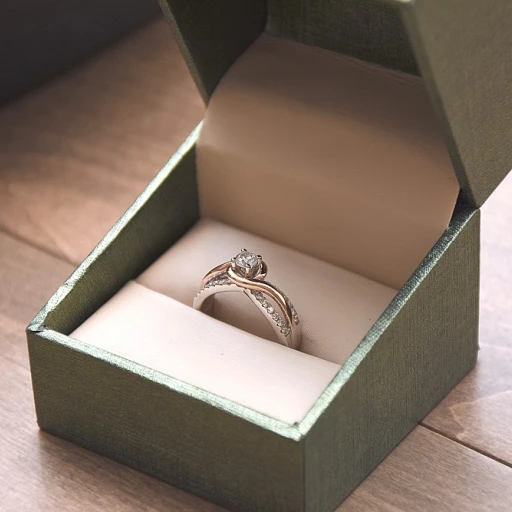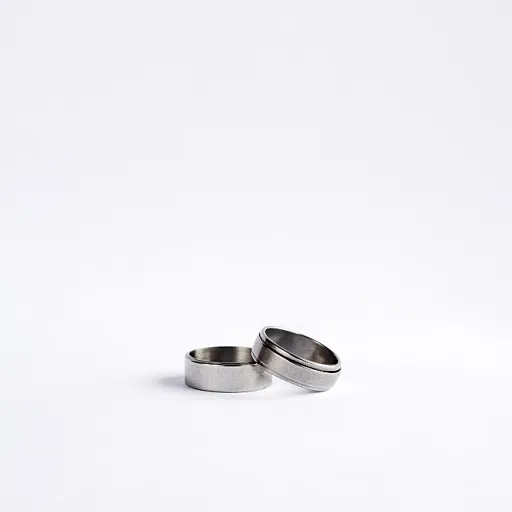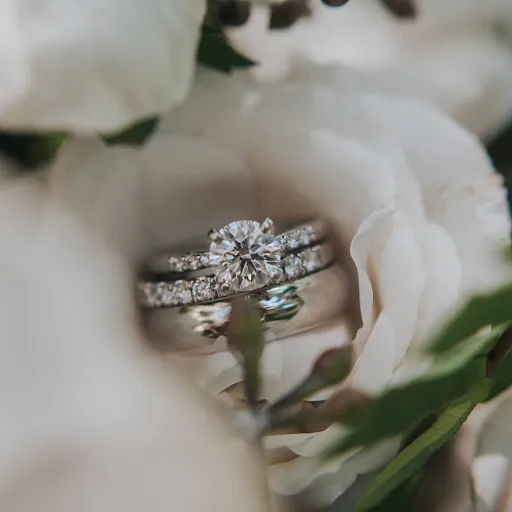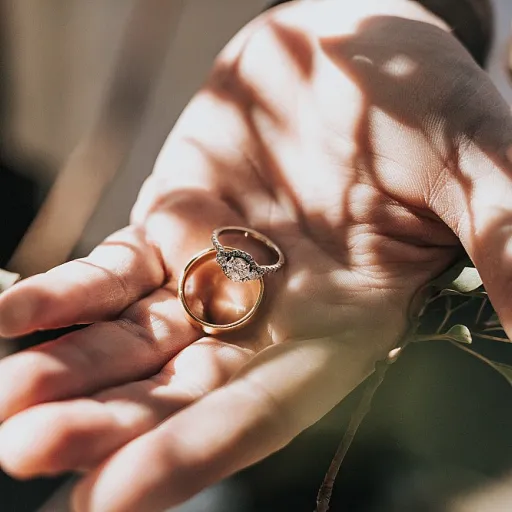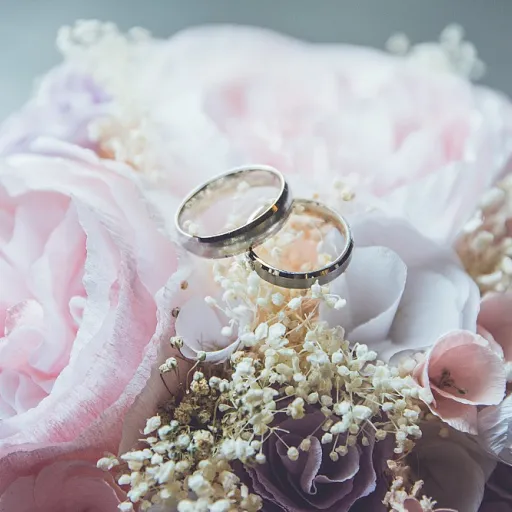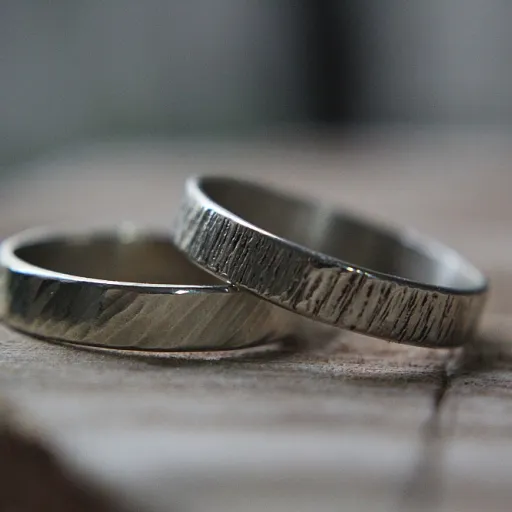
Origins of the claddagh ring and its symbolism
Ancient Irish Roots and Lasting Symbolism
The claddagh ring is one of the most recognizable pieces of Irish jewelry, known for its unique design featuring two hands holding a heart topped with a crown. This symbol, deeply rooted in Irish culture, represents love, loyalty, and friendship—values that are essential in marriage. The claddagh design has been linked to the fishing village of Claddagh in Galway, Ireland, where it first appeared in the 17th century. Over time, it became a cherished token for couples, friends, and families, often passed down through generations as a treasured heirloom.
Design Elements and Their Meanings
Each part of the claddagh ring carries a special meaning. The hands symbolize friendship, the heart stands for love, and the crown represents loyalty. These elements are often crafted in gold, sterling silver, or even white gold, making the ring suitable for both men and women. Some modern claddagh rings feature diamonds, emeralds, or other birthstones, adding a personal touch and making them ideal as engagement rings or wedding rings. The celtic knot is sometimes incorporated into the band, further emphasizing eternal love and unity.
Claddagh Rings in Celtic Wedding Traditions
Claddagh rings are more than just jewelry—they are a symbol of commitment in celtic wedding ceremonies. Couples often choose gold claddagh or silver claddagh rings to honor their heritage and express their bond. The price of these rings can vary depending on the materials used, such as diamond claddagh or rose gold options. Sterling silver claddagh rings are popular for their affordability and classic look, while white gold and emerald accents appeal to those seeking something unique.
Enduring Appeal and Modern Choices
Today, claddagh rings remain a popular choice for wedding and engagement rings, thanks to their rich history and meaningful symbolism. Whether you prefer a simple sterling silver band or a more elaborate diamond claddagh, there is a style for every taste. Irish jewelry designers continue to innovate, blending traditional motifs with contemporary trends. For those interested in exploring the evolution of ring styles, the timeless elegance of Edwardian engagement rings offers another perspective on how historic designs influence today’s wedding jewelry.
What is the claddagh ring curse?
Exploring the "Curse" Behind the Claddagh Ring
The so-called "claddagh ring curse" is a topic that often surfaces in conversations about Irish jewelry and wedding rings. While the claddagh ring is celebrated for its deep symbolism of love, loyalty, and friendship, some myths suggest that improper use or gifting of this iconic piece can bring bad luck or misfortune. These stories have circulated for generations, especially among those interested in Celtic traditions and wedding customs.
At its core, the claddagh ring features a unique design: two hands holding a heart, topped with a crown. This motif is rich in meaning, representing the values many couples seek in marriage. However, the idea of a "ring curse" is not rooted in historical fact but rather in folklore and superstition. There is no documented evidence or scholarly source confirming that a claddagh ring, whether crafted in gold, silver, sterling silver, or adorned with a diamond or emerald, carries any inherent curse.
Most myths about the ring curse revolve around how the ring is worn or received. For example, some believe that buying your own claddagh ring, instead of receiving it as a gift, can bring bad luck. Others claim that wearing the ring incorrectly—such as with the heart facing outward when you are married—can disrupt love or friendship. These beliefs are not supported by historical records or reputable sources in the field of Irish jewelry or Celtic wedding traditions.
It's important to distinguish between myth and reality when considering a claddagh ring for your wedding or engagement. The ring's enduring popularity, whether in white gold, rose gold, or as a mens claddagh ring, is due to its beautiful symbolism and craftsmanship, not any supernatural qualities. For those interested in unique engagement rings, you might also want to explore the allure of the elongated hexagon engagement ring as another meaningful option.
Ultimately, the claddagh ring remains a cherished symbol in Irish culture and beyond, regardless of the myths surrounding it. Whether you choose a gold claddagh, a silver claddagh, or a diamond claddagh ring, the most important aspect is the intention and meaning you bring to your jewelry.
How the curse connects to wedding traditions
The claddagh ring curse and its place in wedding rituals
The idea of a "claddagh ring curse" has found its way into wedding conversations, especially among those who value Celtic traditions. This belief often centers on the idea that wearing a claddagh ring incorrectly, or receiving it from someone with ill intentions, can bring bad luck to a marriage. While there is no historical evidence to support a true curse, these stories have influenced how couples approach their wedding rings and jewelry choices.
For many, the claddagh ring is more than just a piece of Irish jewelry. Its design—a hand holding a heart topped with a crown—symbolizes love, loyalty, and friendship. These values are at the core of marriage, making the claddagh a popular choice for wedding and engagement rings. The supposed curse has led some couples to pay extra attention to the customs around how they wear claddagh rings, especially during wedding ceremonies.
- Wearing the ring: Tradition says the way you wear a claddagh ring matters. On the right hand with the heart facing outward, it signals you are single. On the right hand with the heart facing inward, you are in a relationship. On the left hand with the heart facing inward, it means you are married. Some believe ignoring these customs can invite the "curse," though most see it as a way to honor Irish heritage.
- Material choices: Couples often choose gold, white gold, or sterling silver for their claddagh rings. Some add diamonds, emeralds, or even birthstones for a personal touch. The price and style can vary, but the symbolism remains strong.
- Celtic wedding traditions: The claddagh ring is often paired with other Celtic symbols like the celtic knot or Connemara marble, especially in celtic wedding ceremonies. These elements reinforce the themes of love and unity, countering any negative superstitions.
Modern couples sometimes blend the claddagh with other ring styles, such as hammered wedding bands. If you are interested in unique options for men, you might want to explore hammered wedding bands for men as a complement to traditional claddagh rings.
Ultimately, the "ring curse" is more myth than reality. What matters most is the intention and meaning you bring to your wedding rings, whether you choose a classic gold claddagh, a diamond claddagh, or a modern sterling silver design. The customs and etiquette around how you wear claddagh rings can add depth to your ceremony, but your love and loyalty are what truly define your marriage.
Common myths and facts about the claddagh ring curse
Separating Fact from Folklore
The so-called claddagh ring curse has inspired plenty of stories, but most are rooted in myth rather than reality. The claddagh ring, with its iconic hand, heart, and crown design, is a symbol of love, loyalty, and friendship. While some believe that wearing a claddagh ring incorrectly can bring bad luck to relationships or marriages, there is no historical evidence to support the existence of a true curse. Instead, these beliefs often stem from misunderstandings of Irish customs or superstitions passed down through generations.
Common Misconceptions About the Claddagh Ring
- Wearing the ring the "wrong" way causes bad luck: The direction in which you wear a claddagh ring does have meaning—pointing the heart outward or inward can signal your relationship status. However, there is no proof that wearing it incorrectly brings a curse. It’s more about tradition than supernatural consequences.
- Only Irish people should wear claddagh rings: While the claddagh is a cherished piece of Irish jewelry, people from all backgrounds wear these rings to celebrate love and friendship. The symbolism is universal, and the ring is now popular in gold, silver, white gold, and even rose gold across many cultures.
- Inherited claddagh rings carry a curse: Some believe that receiving a claddagh ring as a gift or heirloom can transfer bad luck. In reality, passing down a claddagh ring, especially in sterling silver or gold, is a gesture of love and connection, not a source of misfortune.
Facts About the Claddagh Ring and Marriage
- Symbolism over superstition: The claddagh ring’s design—hands for friendship, heart for love, crown for loyalty—makes it a meaningful choice for engagement rings and wedding rings, especially in Celtic wedding traditions.
- Material and style: Whether you choose a diamond claddagh, emerald birthstone, or a simple sterling silver claddagh, the value lies in the intention behind the ring, not in any supposed curse.
- Modern etiquette: Today, people wear claddagh rings in many ways, including as men’s wedding bands or as part of Irish jewelry collections. The price, style, or whether it features a celtic knot or connemara marble, does not affect its meaning or bring bad luck.
Ultimately, the idea of a claddagh ring curse is more myth than fact. The enduring popularity of claddagh rings in wedding traditions comes from their rich symbolism and the personal meaning they hold for couples, not from any supernatural beliefs.
Wearing the claddagh ring: customs and etiquette
How to Wear the Claddagh Ring Correctly
The way you wear a claddagh ring is more than just a style choice—it’s a meaningful tradition rooted in Irish culture. The position of the ring on your hand and the direction of the heart symbol can signal your relationship status, which is especially important for those considering the ring for engagement or wedding rings.
- Right hand, heart facing outward: This means you are single and open to love and friendship.
- Right hand, heart facing inward: You are in a relationship, showing your heart is taken.
- Left hand, heart facing outward: Traditionally, this can indicate engagement.
- Left hand, heart facing inward: Worn this way, the claddagh ring symbolizes marriage and lasting love loyalty.
These customs are not just about symbolism—they also help avoid misunderstandings and respect the heritage of Irish jewelry. Whether you choose gold, sterling silver, or even a diamond claddagh, the way you wear claddagh rings matters.
Etiquette for Wearing Claddagh Rings at Weddings
When it comes to weddings, claddagh rings are often used as engagement rings or wedding bands. Couples sometimes select matching rings in white gold, rose gold, or silver claddagh styles, and may even add birthstone accents like emerald or connemara marble for a personal touch. If you’re planning a celtic wedding, consider how the celtic knot or hand heart design can reflect your shared values of love and friendship.
- It’s common to move your claddagh ring from the right to the left hand during the wedding ceremony.
- Some couples engrave their rings with special dates or messages to enhance the meaning.
- For mens claddagh rings, wider bands in sterling silver or gold are popular choices, balancing tradition with modern style.
Remember, the price of claddagh rings can vary based on materials like diamond, gold, or sterling silver. Choose a ring that fits your budget and personal style, but always honor the tradition and symbolism behind this unique piece of Irish jewelry.
Choosing a claddagh ring for your wedding: what to consider
Key Elements to Evaluate When Selecting Your Claddagh Wedding Ring
Choosing a claddagh ring for your wedding is a meaningful decision. The claddagh, with its heart, hands, and crown, stands for love, friendship, and loyalty. As you explore options, consider how the symbolism and traditions discussed earlier connect to your own values and relationship.
Material Matters: Gold, Silver, and More
- Gold claddagh rings: Classic and timeless, available in yellow, white, and rose gold. White gold offers a modern look, while yellow and rose gold bring warmth and tradition.
- Silver claddagh rings: Sterling silver is affordable and elegant, often chosen for its understated shine. Silver claddagh rings are popular for both men and women.
- Alternative materials: Some couples opt for platinum, titanium, or even connemara marble for a unique Irish touch.
Gemstones and Personalization
- Diamonds: A diamond claddagh ring adds sparkle and is a popular choice for engagement or wedding rings.
- Emeralds and birthstones: Emeralds are deeply connected to Irish heritage. Birthstones can add a personal touch and meaning to your jewelry.
- Custom engravings: Many jewelers offer engraving options, allowing you to add initials, dates, or a short message to your ring.
Design Choices: Celtic Knots and More
Celtic wedding rings often feature intricate knotwork alongside the claddagh symbol. These designs highlight the connection between Irish culture and enduring love. Consider whether you want a simple hand heart motif or a more elaborate celtic knot pattern.
Comfort, Fit, and Sizing
- Comfort fit: Look for rings with rounded inner edges for daily wear.
- Width and weight: Mens claddagh rings are often wider and heavier, while women’s rings may be slimmer and lighter.
- Sizing: Try on different sizes and styles to ensure your ring fits comfortably, especially if you plan to wear claddagh jewelry every day.
Budget and Value
Claddagh rings come in a wide price range. Sterling silver is generally more affordable, while gold and diamond claddagh rings are higher in price. Consider your budget, but also think about the ring’s sentimental value and how it reflects your love loyalty and friendship.
Authenticity and Craftsmanship
- Irish jewelry: Authentic claddagh rings are often crafted in Ireland. Look for reputable jewelers who specialize in celtic and irish designs.
- Quality assurance: Check for hallmarks indicating genuine gold or sterling silver. Well-made rings will last a lifetime and can become cherished family heirlooms.
Tradition and Personal Meaning
Finally, remember that the way you wear claddagh rings—on which hand and how the heart faces—carries meaning, as discussed in earlier sections. Whether you choose a simple silver claddagh or a diamond-studded gold claddagh, let your wedding ring reflect your unique story and the traditions you wish to honor.

